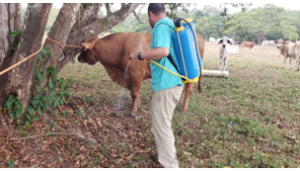New World Screw Worm
What is New WOrld Screw Worm?
Myiasis caused by screwworm in livestock, also known as “gusanera,” is an infestation caused by fly larvae that feed on the living tissue of mammals (including humans) and occasionally birds.
Two species of flies are responsible for this type of myiasis: the New World fly Cochliomyia hominivorax, found only in the Americas, and the Old-World fly Chrysomya bezziana, found exclusively in Africa and Asia.
The wounds emit a characteristic odour that attracts gravid female flies to lay their eggs. These flies can travel distances of up to 20 kilometers in tropical climates or up to 300 kilometers in arid environments to locate a suitable host.
The fly Cochliomyia hominivorax undergoes complete transformation, progressing through the stages of egg, larva, pupa, and adult. Its life cycle can take around 24 days in temperate climates, and approximately 18 days in tropical climates.
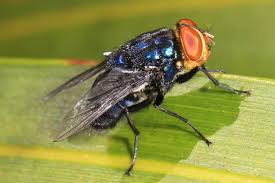

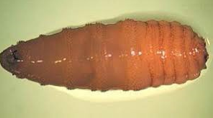
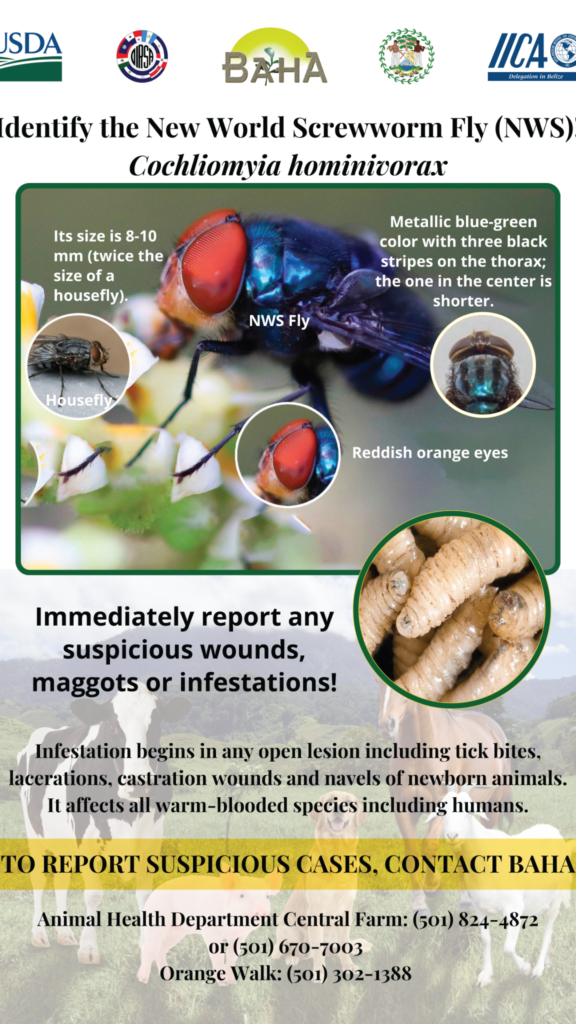
The larvae can infest a variety of wounds, including those as small as a tick bite. However, the most common infestations occur in the navels of newborns, wounds from castration or dehorning, and the vulvar or perineal regions of females.
The larva is cylindrical and whitish in shape, with two hooks at one end and twelve segments separated by rings with protruding spines, giving it a screw-like appearance. This structure allows it to burrow into a wound by “drilling” through the tissues it feeds on.
At the start of an infestation, slight movement can be observed within the wound, which becomes deeper and more extensive as the larvae feed on the tissue, producing serosanguineous discharge. Affected animals typically isolate themselves from the group and display signs of lethargy, loss of appetite, and discomfort at the wound site. Without treatment, animals may die within 7 to 14 days due to toxicity or secondary infections.
The screwworm has caused severe damage to livestock across the Americas, particularly in cattle. Wounds from dehorning, castration, branding, tick bites, and especially calf birth and the navels of newborn animals are highly attractive to female flies for egg-laying.
Life Cycle
I. Egg – Day 0: Females deposits 200- 400 eggs each time near wounds or natural orifices. It takes 12-14 hours to hatch.
II. Larva: Takes 5-7 days to develop completely, feeding from live tissue. It then leaves the wound, falling to the ground to continue its cycle.
III. Pupa: Once on the ground, the larva buries itself and takes 7-10 days during the Pupa stage to continue its transformation.
IV. Adult – Screwworm Fly: Fly emerges. Males become sexually
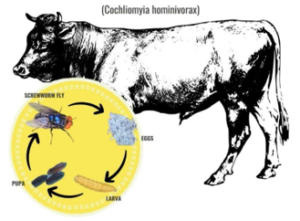
Proper Wound Management!
· Immediate Treatment: Clean and treat all wounds promptly,
including those from castration, dehorning, branding,
and tick bites.
· Wound Protection: Use antiseptic sprays, fly repellents, or wound dressings
to prevent female flies from laying eggs.
· Monitoring: Regularly inspect animals for any signs of wounds or infestations.
Good Hygiene Practices
· Clean Facilities: Maintain clean living conditions for livestock to reduce the presence of flies.
· Manure Management: Properly dispose of manure and organic waste to minimize breeding grounds for flies.
· Tick Control: Use acaricides and other measures to reduce tick populations, as their bites can become entry points for infestation.

